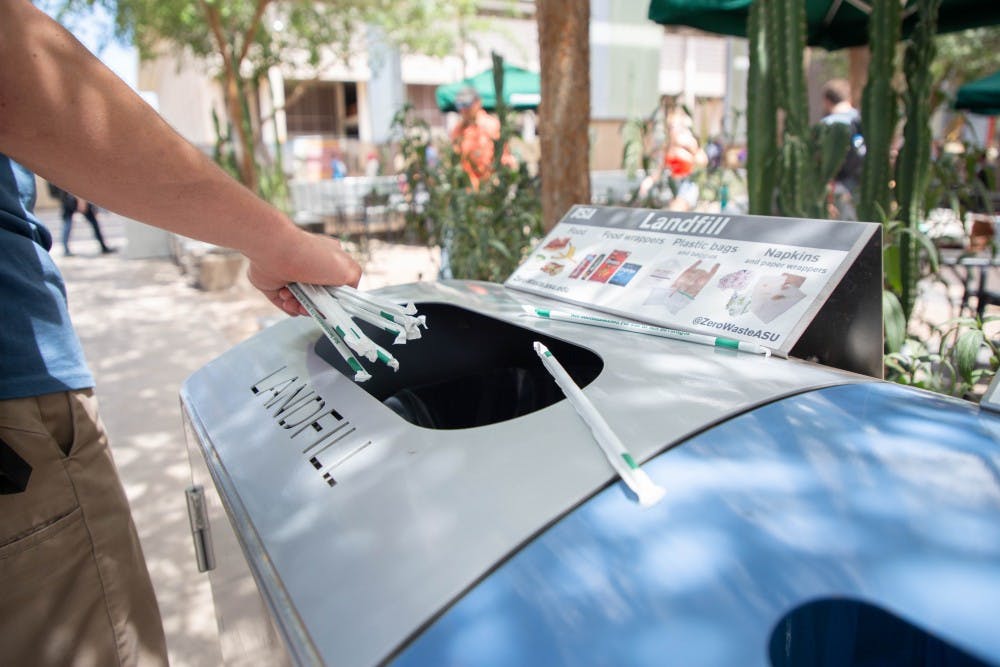Have you ever thought about how much plastic you use during the day? Your morning Starbucks trip, the lid and plastic utensils used for a Qdoba lunch in the Memorial Union, the wrapper of a granola bar and the list goes on. It seems impossible to even go one day without creating some sort of plastic waste.
ASU faculty believe that eliminating plastics from our daily lives and limiting our plastic footprint can start by decreasing usage of single use straws. This tiny utensil has been under a lot of heat recently as the world has began to focus more on sustainability efforts.
Charlie Rolsky, an ASU Biodesign researcher and graduate student, agreed that eliminating everyday usages of plastic, such as straws, is a good place to start.
“It seems like they’re easily replaceable because you can simply ask for a drink without a straw in it," Rolsky said. "This represents an area where the everyday person can make a change in their own lives by becoming more aware of their plastic usage.”
500 million straws, enough to fill 127 school buses, are used in America each day, according to environmental website eco-cycle.
Companies such as Starbucks have announced that they are dedicated to eliminating single use straws completely by 2020. By doing this, Starbucks alone has stated that they will eliminate over 1 billion straws a year. In some cases, entire cities, like Seattle, are banning single use straws.
For Benjamin Stanley, an ASU research analyst and sustainability professor, said the most frustrating part of the excessive plastic usage is the trade-off — or lack thereof.
“While carbon is polluting the air, we have technology that is able to make us a much more productive society with things like cars," Stanley said. "With plastic, it is a simple convenience that we can easily find alternatives for.”
With so many restaurants, municipalities and even national parks jumping onboard with banning single use plastic straws, the banning of these plastic objects might not seem to far-fetched.
However, some individuals, such as children, elderly and those with disabilities, need straws in their lives, raising the question as to who is responsible for accommodating them and their needs.
Annie Goldsand, a faculty associate in the school of social transformation, believes that the restaurant should be the responsible party for investing in reusable straws to accommodate for those who need them.
“If we were talking about a wheelchair ramp, would businesses ask me to bring my own?" Goldsand said. "No, so why should it be my sole responsibility to bring my own straw?”
The plastic straw debate is requiring sustainability experts, business owners, advocates for the disabled community and everyday consumers to come together to find a solution to save the ecosystem.
Even though Rolsky acknowledges the straw debate and how it could affect specific communities, he said that at this point, people can not be picky when it comes to limiting plastic disposal.
"I think straws are a good area to focus on because it seems like they’re easily replaceable," Rolsky said. "It represents an area of everyday plastic use that we can gravitate away from, and it also represents an area where the everyday person can work to create to change in their own lives."
Reach the reporter at Addie.Fairley@asu.edu or follow @AddieFairley on Twitter.
Like The State Press on Facebook and follow @statepress on Twitter.




